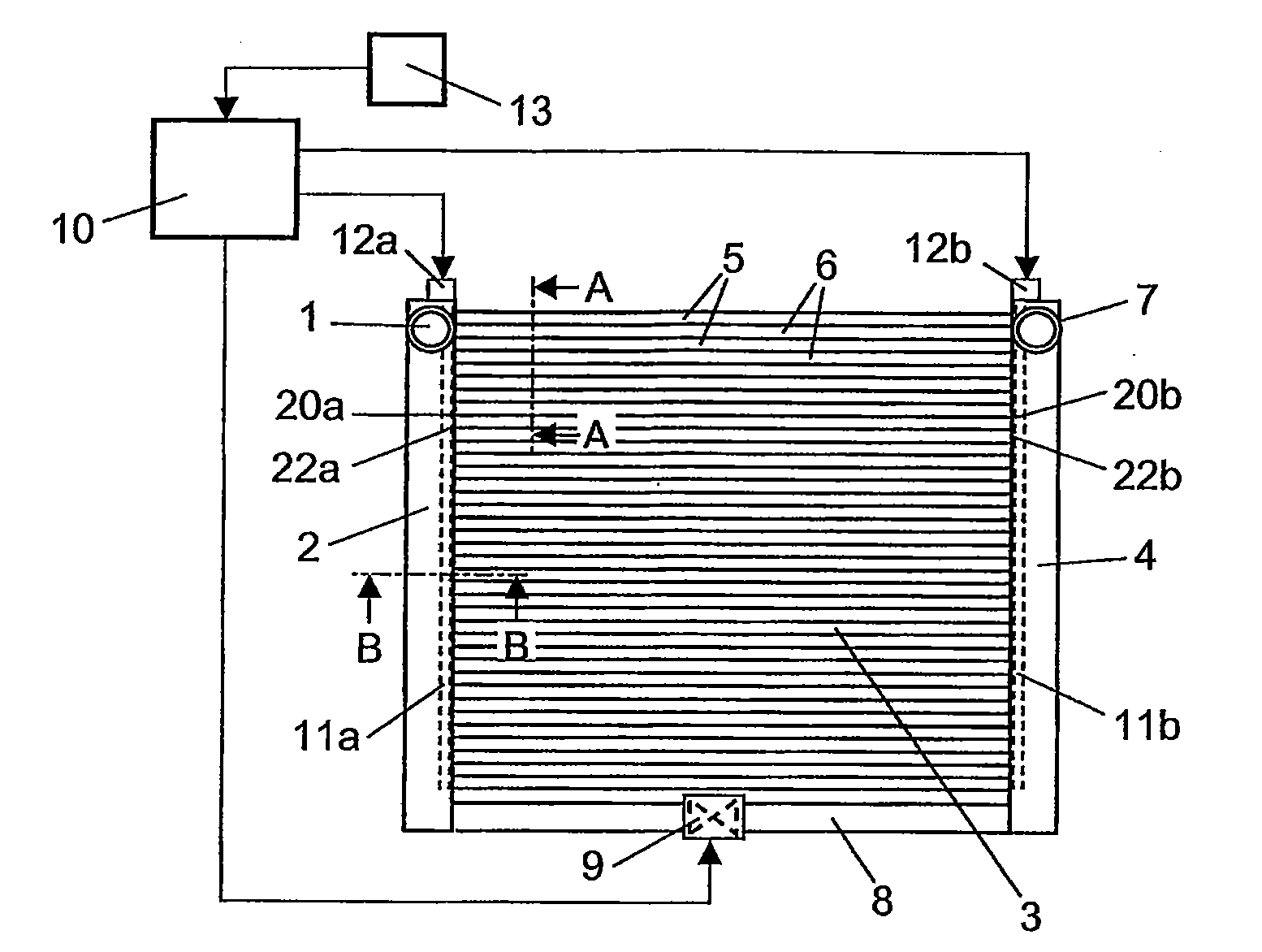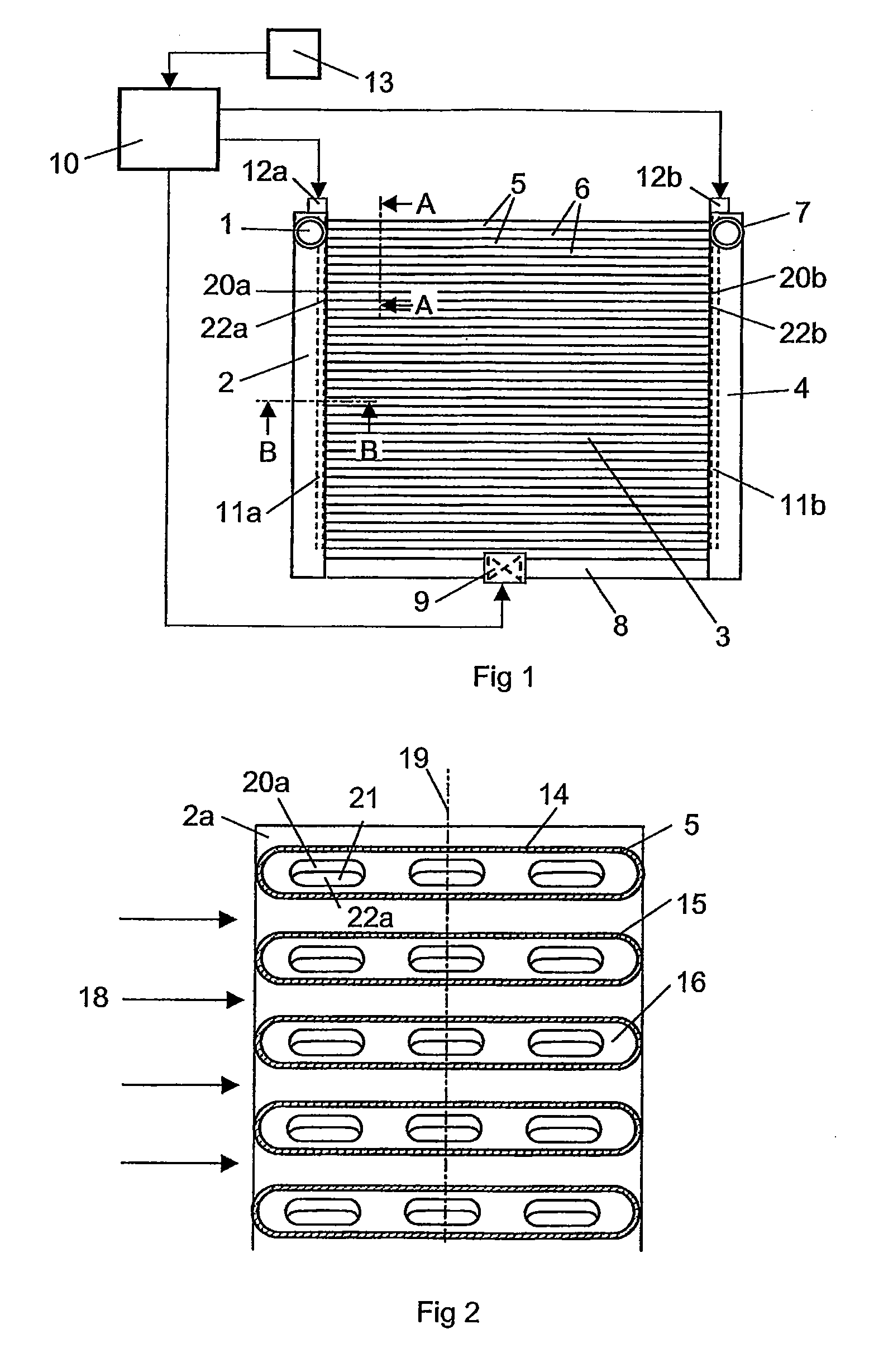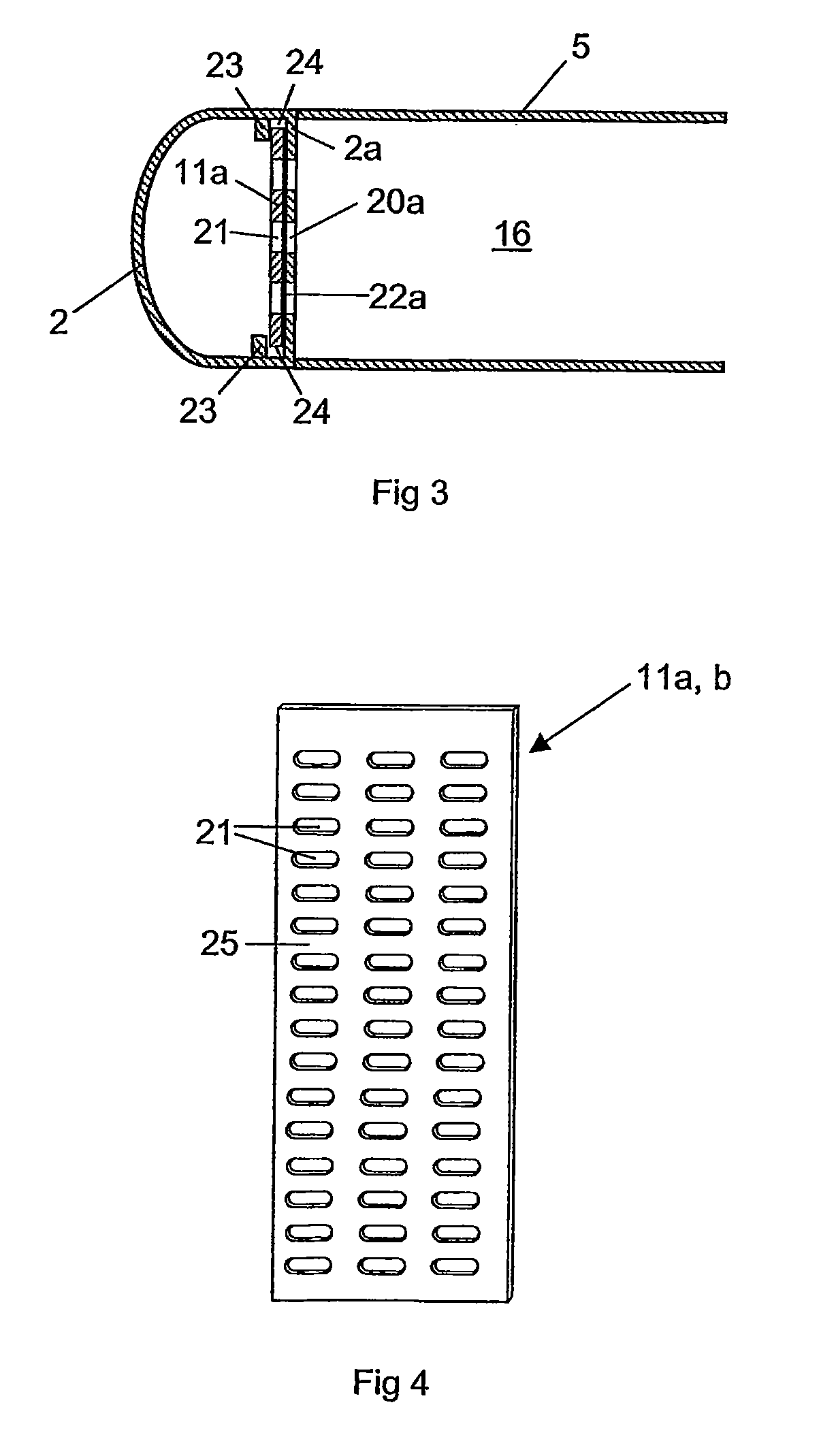Charge Air Cooler
- Summary
- Abstract
- Description
- Claims
- Application Information
AI Technical Summary
Benefits of technology
Problems solved by technology
Method used
Image
Examples
Embodiment Construction
[0016]FIG. 1 depicts a charge air cooler which may for example be fitted at a front portion of a vehicle which is powered by a supercharged combustion engine. A supercharged combustion engine needs a supply of compressed air. The function of the charge air cooler is to cool the compressed air before it is led to the combustion engine. The charge air cooler comprises an inlet 1 to a first tank 2 which receives warm compressed air from a compressor. The charge air cooler comprises a cooler package 3 which extends between the first tank 2 and a second tank 4 for receiving cooled compressed air. The cooler package 3 comprises a plurality of tubular elements 5 which extend in a substantially rectilinear manner in a common plane between the first tank 2 and the second tank 4.
[0017]The tubular elements are arranged parallel at a substantially uniform distance from one another so that there are regular gaps 6 between adjacent tubular elements 5. Surrounding air can therefore flow through th...
PUM
 Login to View More
Login to View More Abstract
Description
Claims
Application Information
 Login to View More
Login to View More - R&D
- Intellectual Property
- Life Sciences
- Materials
- Tech Scout
- Unparalleled Data Quality
- Higher Quality Content
- 60% Fewer Hallucinations
Browse by: Latest US Patents, China's latest patents, Technical Efficacy Thesaurus, Application Domain, Technology Topic, Popular Technical Reports.
© 2025 PatSnap. All rights reserved.Legal|Privacy policy|Modern Slavery Act Transparency Statement|Sitemap|About US| Contact US: help@patsnap.com



